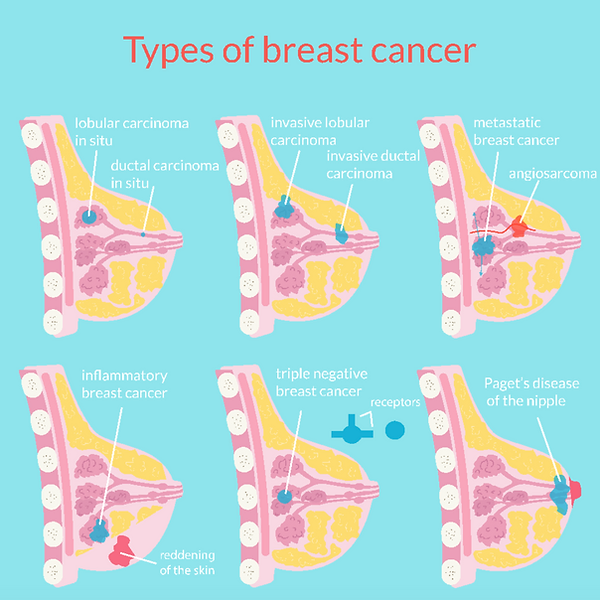Dr K reflects on her friends, and reminds us that every day is Breast Cancer Awareness day when we have a loved one bravely fighting for their lives. Help us spread the word about Triple Negative Breast Cancer and give HOPE to young women who have this disease.
Scroll down for more information.
The facts
African American women are 42% more likely to die from breast cancer compared to White women or any other racial/ethnic group in the United States. This persistent health disparity exists because African American women are more likely to be diagnosed with breast cancer at a later stage, are less likely to receive stage-appropriate treatment, and are more likely to have lower stage-for-stage survival rates. Factors such as cultural norms, societal injustice, and concentrated poverty also contribute to racial breast cancer disparities.
Types of breast cancer

Background
Breast cancer is one of the few cancers for which an effective screening test, mammography, is available. MRI (magnetic resonance imaging), ultrasound, and clinical breast exams are also used to detect breast cancer, but not as routine screening tools.
Ongoing studies are looking at ways to enhance current breast cancer screening options. Technological advances in imaging are creating new opportunities for improvements in both screening and early detection.
One new technology is 3-D mammography, also called breast tomosynthesis. This procedure takes images from different angles around the breast and builds them into a 3-D-like image. Although this technology is increasingly available in the clinic, it isn’t known whether it is better than standard 2-D mammography, for detecting cancer at a less advanced stage.
It is now known that breast cancer can be divided into subtypes that respond differently to various types of treatment. The three main clinical subtypes of breast cancer are:
Hormone receptor (HR) positive. HR-positive breast cancers are those that contain the estrogen receptor (ER) and/or progesterone receptor (PR). These cancers grow in response to these hormones and can be treated with hormone therapies.
Human epidermal growth factor receptor 2 (HER2) positive. HER2-positive breast cancers are those that have high amounts of the HER2 protein; they can be HR positive or HR negative. These cancers can be treated with therapies that target HER2.
Triple-negative breast cancer. Such cancers do not contain ER, PR, or HER2.
As we learn more about the subtypes of breast cancer and their behavior, we can use this information to guide treatment decisions.
Triple-Negative Breast Cancer
Triple-negative breast cancers (TNBC) are the hardest to treat because they lack both hormone receptors and HER2 over expression, so they do not respond to therapies directed at these targets. Therefore, chemotherapy is the mainstay for treatment of TNBC.
FDA Fully Approves Sacituzumab for Breast Cancer
Approval is for locally advanced or metastatic triple-negative breast cancer.
Some treatments now being used or still being tested are:
- Sacituzumab govitecan-hziy (Trodelvy) which is approved to treat patients with TNBC that has spread to other parts of the body. Patients must have received at least two prior therapies before receiving the drug.
- Pembrolizumab (Keytruda), an immunotherapy drug that is approved in to be used in combination with chemotherapy for patients with locally recurrent or metastatic TNBC that has the PD-L1 protein. A different immunotherapy drug, atezolizumab (Tecentriq), is also approved to be used with chemotherapy in patients with metastatic TNBC that has the PD-L1 protein.
- PARP inhibitors work by blocking a protein that is used to repair damage to DNA that occurs during cell division. These drugs, which include olaparib (Lynparza) and talazoparib (Talzenna), effectively target TNBC caused by certain inherited BRCA gene mutations or other alterations that lead to defects in DNA damage repair. They are also approved for metastatic ER-positive, HER2-negative breast cancers in patients who have inherited a harmful BRCA gene mutation.
- Drugs that block the androgen receptors (AR) or prevent androgen production are being tested in a subset of TNBC cancers that express the AR.
If you or someone you know is diagnosed with breast cancer make sure ask about the genetics of your tumor and stage of disease so that the best treatment plan is offered.
Action plan – shifting the curb
The keys to lowering the number of Black women who die of breast cancer are to:
1. Get your mammograms as early as possible
2. Know what your breasts look and feel like
3. Know if other females in the family have breast cancer and or have died from breast cancer
4. Call the American Cancer Society to find the comprehensive breast cancer treatment center near you
5. Medical centers need to develop culturally appropriate messaging about breast cancer to black women across all social economic backgrounds
For women 50 to 74 years of age, physicians should offer screening. For women 40 to 49 years of age, risk stratification is an important component of assessing the potential benefits of breast cancer screening. The most commonly used risk-prediction model, the Breast Cancer Risk Assessment Tool, is available on the National Cancer Institute Web site.